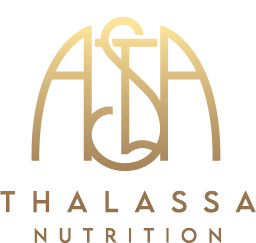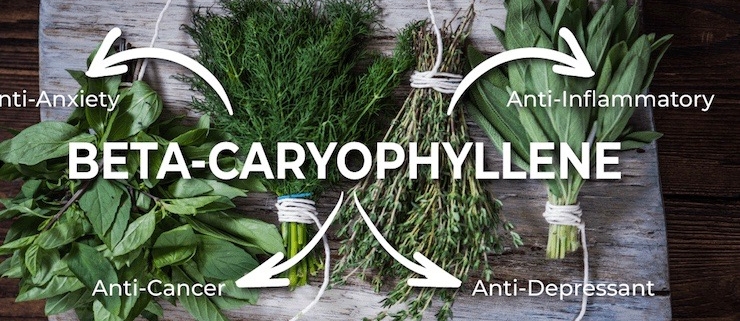Non-Marijuana Plants That Contain Healing Cannabinoid
Complete List of Non-Marijuana Plants That Contain Healing Cannabinoid-Like Compounds
Cannabis contains beneficial cannabinoids that help heal the body, but they aren’t exclusive to cannabis. In fact, cannabinoids and cannabinoid-like substances that stimulate the endocannabinoid system (ECS) are very common in other non-marijuana plants.
The enticing thing about these plants is that they don’t get you high. Almost all CBD extractions from cannabis contain a small proportion of THC. This also holds true for cannabis strains that are marketed as high-CBD strains.
So those individuals who would rather stay away from the hallucinatory effects of THC can make use of the cannabinoid-like elements in non-marijuana plants like oregano and black pepper.
What is the Endocannabinoid System?
The endocannabinoid system (or ECS) is a vital molecular system for helping maintain homeostasis in the body. Homeostasis is the perfect internal balance required for optimum health. Because of its crucial role in homeostasis, the ECS is found abundantly in the animal kingdom (1).
The ECS has three key components:
• Cannabinoid receptors on the surface of cells
• Endocannabinoids that activate cell-surface cannabinoid receptors
• Metabolic enzymes that break down endocannabinoids once they’re used up
There are two major cannabinoid receptors: CB1 and CB2. CB1 receptors are found most abundantly in the brain and spinal cord (they’re also the receptors that interact with THC to get people high), but can also be found in different parts of the body. CB2 receptors are located all throughout the body, instead of being localized to the nervous system.
Endocannabinoids like anandamide and 2-AG get made by the body when they’re needed, and are regulated by enzymes like FAAH and MAGL, which break down anandamide and 2-AG, respectively. These metabolic enzymes ensure that endocannabinoids get used when they are needed, but not for longer than necessary.
Other cannabinoid-like compounds also interact with the ECS, which I’ll describe more below.
Cannabinoid-Like Compounds
The cannabinoid-like compounds described below are found abundantly in the plant-food kingdom (particularly beta-caryophyllene).
1. Anandamide (True Cannabinoid)
I figured I would stick this one in here, because there are a couple foods which boost production of this molecule and help prevent it from breaking down. Anandamide is not a cannabinoid-like compound, and is in fact an endocannabinoid (like the body’s own version of cannabis).
Our mood, happiness, ability to regulate stress and anxiety are all regulated by the ECS. When anandamide levels are messed up, one could end up with mental health disorders from schizophrenia to depression (2).
Anandamide is produced by the body, and then quickly broken down by the enzyme FAAH. Studies have found that in individuals with a genetic mutation lacking the FAAH enzyme, their levels of happiness are considerably higher than the average person (3). So, of course, consuming foods that block this enzyme would promote happiness, right? Right!
Cacao deactivates the FAAH enzyme, meaning more free-floating anandamide in the brain (4). Black truffles also produce more anandamide in the body than enzymes know what to do with, which is why people might feel extra euphoric after consuming them (5).
2. Beta-Caryophyllene
Beta-caryophyllene (BCP) is an aromatic sesquiterpene that selectively interacts with the CB2 receptor, blocking the chemical signals that lead to inflammation. It does not bind to the CB1 receptor, making it favorable among those who wish to not succumb to cannabis’s mood-altering effects (6).
According to Dr. Jürg Gertsch, BCP is potent enough to have an impact at normal dietary levels. “If somebody eats a lot of herbs containing essential oils, then it’s possible they could get enough to reach a therapeutic dose,” said Gertsch (7).
In a study led by Gertsch, BCP was used to treat mice with swollen paws. In around 70 percent of cases, small doses of BCP were enough to make the inflammation subside (8).
BCP has been found to increase longevity, improve stroke outcome, protect the cardiovascular system and brain, help prevent Alzheimer’s and Parkinson’s disease, as well as reduce depression and anxiety. It also may prevent cancer, and improve bone density (9).
Herbs like clove, black-jack, copaiba, black pepper and rosemary remain some of the highest BCP-containing plants out there.
3. Cannabigerol
Cannabigerol or CBG is considered a minor cannabinoid, but with major benefits. CBG is thought to be particularly effective in treating glaucoma because it helps reduce intraocular pressure (10). It also helps reduce inflammation (11), and has shown great promise as a cancer fighter by blocking receptors that cause cancer cell growth (12).
4. Cannabimimetics
There are many different plants that contain compounds called cannabimimetics, meaning they literally mimic the biological activity of the classical cannabinoids (even though they don’t share the same structure). They generally interact with CB1 receptors, but you won’t feel much psychedelic effects unless taken in large amounts.
5. Chromane and Chromene Derivatives
Two cannabinoid-like compounds, antopogocyclolic acid and anthopogochromenic acid (derivatives of chromane and chromene), have been isolated from the Chinese medicinal plant Rhododendron anthopogonoides. This plant also contains three related compounds known as synthetic analogues of cannabinoids: cannabichromene (CBC) type, cannabicyclol (CBL) type and cannabicitran (CBT) type (13). According to research, the essential oils extracted from this plant can kill anything from staph infections to cancer cells (14).
6. N-isobutylamides
Cannabinoid-like compounds known as N-isobutylamides act on the CB2 receptor, making them powerful painkillers and inflammation fighters. The Amazonian plant known as the Electric Daisy contains N-isobutylamide, which is a well-known and utilized toothache remedy. It is so powerful, in fact, that it is even being used by some doctors to help with painful scenarios like impacted wisdom teeth (15).
7. Perrottetineinic Acid
Perrottetineinic acid is an unusual type of cannabinoid produced by the liverwort plant indigenous to New Zealand. This cannabinoid-like compound is closely related to THC, and has been known to treat bronchitis and alleviate problems with the gallbladder, liver and bladder (16).
Complete List of Non-Marijuana Plants with Cannabinoid-Like Compounds
Using the sub-categories above, the following is a curated list of all non-marijuana plants containing cannabinoid-like compounds.
1. Anandamide
– Cacao (Theobroma cacao)
– Truffles (Tuber melanosporum)
2. Beta-Caryophyllene
Highest levels of BCP starting from the top with (source):
– Black-jack (Bidens pilosa)
– Clove (Syzgium aromaticum)
– Copaiba (Copaifera langsdorffii) (source)
– Black pepper (Piper nigrum)
– Beefsteak Plant (Perilla frutescens)
– Rosemary (Rosmarinus officinalis)
– Wild Allspice (Lindera benzoin)
– Gotu Kola (Centella asiatica)
– Angelica (Angelica archangelica)
– Oregano (Origanum vulgare)
– Basil (Ociumum basilicum)
– Sage (Salvia officinalis)
– Vitex (Vitex agnus-castus)
– Curled Parsley (Petroselinum crispum)
– Cilantro (Coriandrum sativum)
– Frankincense (Boswellia sacra)
– Celery (Apium graveolens)
– Eucalyptus (Corymbia citriodora)
– Cinnamon (Cinnamomum verum)
– Thyme (Thymus vulgaris)
– Myrrh (Commiphora myrrha)
– Valerian (Valeriana officinalis)
3. Cannabigerol
– Helichrysum (Helichrysum umbraculigerum)
4. Cannabimimetics
– Cone Flower (Echinacea purpurea; Echinacea angustifolia)
5. Chromane and Chromene Derivatives
– Labrador (Rhododendron anthopogonoides)
6. N-isobutylamides
– Electric Daisy (Acmella oleracea)
7. Perrottetineinic Acid
– Liverwort (Radula Marginata)
The following plants can either be consumed (in the case of spices and herbs like cilantro and parsley), or they can be applied to areas of the body that need a little extra healing (in the form of essential oils – such as copaiba. Always be sure to dilute in a carrier oil like jojoba oil before applying to the body).
Some of these herbs can also be drunk as a tea, or taken as a tincture. If using any of the herbs or foods above, make sure you follow the directions of the supplement purchased, or consume as you would in the case of herbs like parsley and cilantro.

 no
no
 no
no
Leave a Reply
Want to join the discussion?Feel free to contribute!